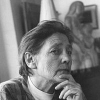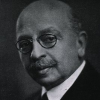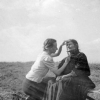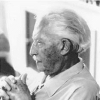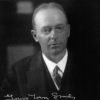Ховланд, Карл Ивер: биография
В своих исследованиях в области убеждения Ховланд пришел к ряду выводов, которые сегодня считаются классическими:
- Источники с высоким уровнем доверия ведут к большим изменениям отношений сразу после акта коммуникации.
- Слабое использования страха ведет к большим изменением, чем сильная опора на страх.
- Чисто позитивные сообщения лучше влияют на людей с низким уровнем образования. На людей с высшим образованием лучше воздействует выдача как позитивных, так и негативных аргументов (аргументов «за» и «против»).
- Наличие в сообщении четкого вывода действует лучше, чем спрятанный вывод.
- Индивиды, связанные с группой, слабее подвергаются воздействию по вопросам, вступающим в противоречие с групповыми нормами.
Труды
- The generalization of conditioned responses. I. The sensory generalization of conditioned responses with varying frequencies of tone. J. Gen. Psychol, 1937. — 17:125-48.
- Experimental studies in rote-learning theory. I. Reminiscence following learning by massed and by distributed practice. J. Exp. Psychol, 1938. — 22:201-24.
- Experimental studies in rote-learning theory. V. Comparison of distribution of practice in serial and paired-associate learning. J. Exp. Psychol, 1939. — 25:622-33.
- With C. L. Hull, R. T. Ross, M. Hall, D. T. Perkins, and F. B. Fitch. Mathematico-Deductive Theory of Rote Learning: A Study in Scientific Methodology. New Haven: Yale University Press, 1940.
- With R. R. Sears. Minor studies of aggression. VI. Correlation of lynchings with economic indices. J. Psychol, 1940. — 9:301-10.
- Psychology of the communicative process. In Communications in Modern Society, ed. W. Schramm, Urbana: University of Illinois Press, 1948. — pp. 59–65.
- Social communication. Proc. Am. Philos. Soc., 1948. — 92:371-75.
- With A. A. Lumsdaine and F. D. Sheffield. Experiments on Mass Communication. Princeton: Princeton University Press, 1949.
- Human learning and retention. In Handbook of Experimental Psychology, ed. S. S. Stevens. New York: Wiley, 1951. — pp. 613–89.
- A «communication analysis» of concept learning. Psychol. Rev., 1952. — 59:347-50.
- With I. L. Janis and H. H. Kelley. Communication and Persuasion: Psychological Studies of Opinion Change. New Haven: Yale University Press, 1953.
- With W. Weiss. Transmission of information concerning concepts through positive and negative instances. J. Exp. Psychol, 1953. — 45:175-82.
- With H. C. Kelman. «Reinstatement» on the communicator in delayed measurement of opinion change. J. Abnorm. Soc. Psychol, 1953. — 48:327-35.
- Effects of the mass media of communication. In Handbook of Social Psychology / ed. G. Lindzey Cambridge, Mass.: Addison-Wesley, 1954. — vol. 2, pp. 1062–1103.
- With K. H. Kurtz. Concept learning with differing sequences of instances. J. Exp. Psychol. 1956. — 51:239-43.
- With others. The Order of Presentation in Persuasion. New Haven: Yale University Press, 1957
- Reconciling conflicting results derived from experimental and survey studies of attitude change. Am. Psychol, 1959. — 14:8-17.
- With others. Personality and Persuasibility. New Haven: Yale University Press, 1959
- With L. N. Morrisett. A comparison of three varieties of training in human problem solving. J. Exp. Psychol, 1959. — 58:52-55.
- Computer simulation of thinking. Am. Psychol, 1960. — 15:687-93.
- With E. B. Hunt. Computer simulation of concept attainment. Behav. Sci, 1960.&160;— 5:265-67.
- With E. G. Hunt. Order of consideration of different types of concepts. J. Exp. Psychol, 1960. — 59:220- 25.
- With M. J. Rosenberg, W. J. McGuire, R. P. Abelson, and J. W. Brehm. Attitude Organization and Change: An Analysis of Consistency Among Attitude Components. New Haven: Yale University Press, 1960.
- With R. N. Shepard and H. M. Jenkins. Learning and memorization of classifications. Psychol. Monogr. No. 75, (13, Whole No. 517). 1961
- With M. Sherif. Social Judgment: Assimilation and Contrast Effects in Communication and Attitude Change. New Haven: Yale University Press, 1961

